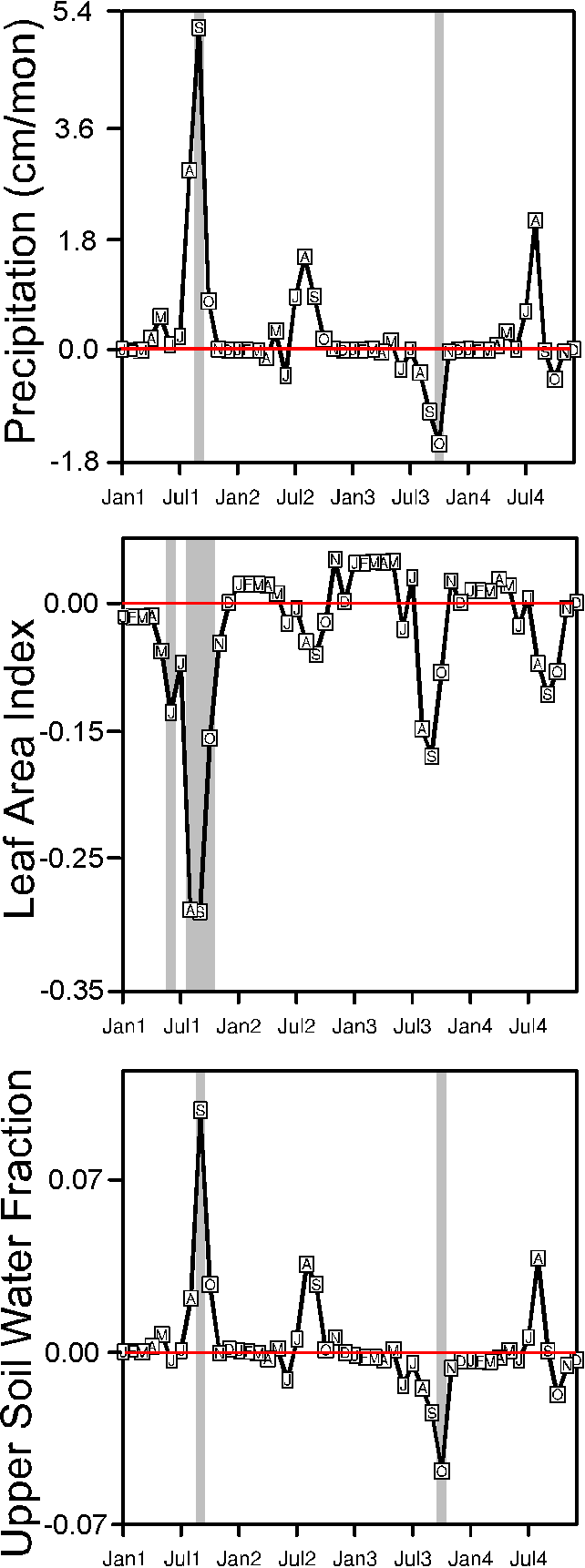
 |
||||
| |
||||
Mid-Holocene Vegetation Feedbacks andAbrupt Change over North AfricaCollaborators: Zhengyu Liu, Robert Gallimore, Yi Wang, Sam Levis, John Kutzbach, J.P. Argenti, I.C. Prentice Funding: DOE Publications: Methods: The abrupt collapse of vegetation across North Africa around 5.5K and vegetation feedbacks on precipitation over that region in the mid-Holocene are investigated using the FOAM-LPJ fully coupled global climate model. Key finding: FOAM-LPJ successfully simulated the abrupt collapse in North African vegetation cover in response to a gradual reduction in rainfall (due to orbital forcing). Vegetation feedbacks, as revealed both statistically using lagged covariances and dynamically using ensemble experiments, are negative on precipitation over North Africa in FOAM-LPJ during the mid-Holocene. |
||
 |
During the mid-Holocene, vegetation was quite abundant across the southern Sahara. This is simulated by FOAM-LPJ fully coupled global climate model for the mid-Holocene, around 6K years ago. Ensemble experiments in which vegetation cover fraction is reduced by 0.2 over the southern Sahara display an increase in precipitation. This suggests a negative feedback of vegetation on precipitation during that period. | |